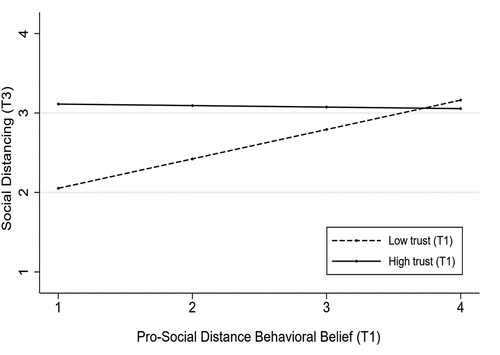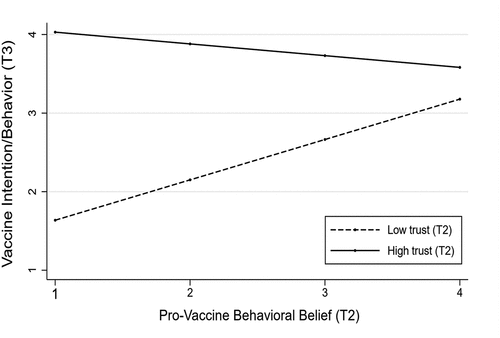Figures & data
Table 1. Descriptive statistics for time 1 measures comparing samples available at each measurement wave
Table 2. Weighted descriptive data and correlations of primary variables for facemask wearing and social distancing analyses
Table 3. Weighted descriptive data and correlations of primary variables for vaccine analyses
Table 4. OLS regression: protective behavior on time 1 trust in public health sources and pro-behavioral belief
Table 5. OLS regression: time 3 COVID-19 Vaccine intention/behavior on trust in public health sources and behavioral belief
Figure 1. Predictive margins: facemask wearing at time 3 (T3) on pro-facemask wearing beliefs and trust/distrust in public health sources time 1 (T1).

Figure 2. Predictive margins: social distancing at time 3 (T3) on Pro-social distancing beliefs and trust/distrust in public health sources at time 1 (T1).

Figure 3. Predictive margins: vaccination behavior/intentions at time 3 (t3) on pro-vaccine beliefs and trust/distrust in public health sources at time 2 (T2).

